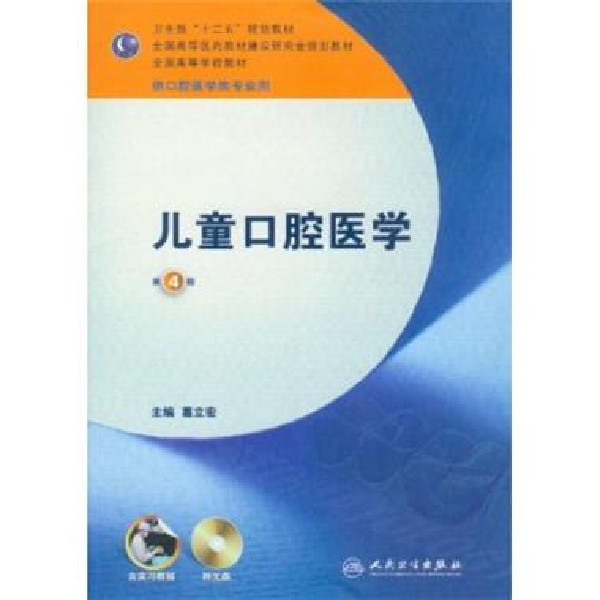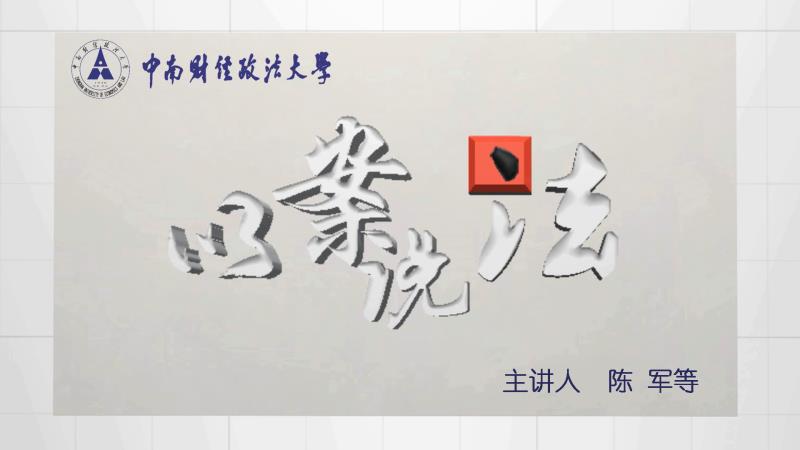
当前课程知识点:Chinese Folk Motif Arts > Unit 4. The Heritage of Chu Culture: Discovering the Intangible Cultural Heritage > 4.5 Art Practice: Decorative painting > Art Practice: Decorative painting coloring
返回《Chinese Folk Motif Arts》慕课在线视频课程列表
返回《Chinese Folk Motif Arts》慕课在线视频列表
现在 我们演示装饰画上色篇的内容
先看这几张素材图片
这是湘西土家族的一组织锦图案
分别是台台花 四十八勾
大龙花和大蛇花
这些图案主要是由大红色 桃红色
土黄色 绿青色和蓝紫色构成
这些颜色大都具有较高的彩度
也就是饱和度
它们的相互搭配和组合
形成了土家族织锦图案
色彩斑斓的鲜明特色
也为我们这幅装饰画的色彩
提供了可供参照的配色方案
右上角是我们根据土家族织锦图案
为装饰画设定的5种颜色
现在 我们回到PS软件里
我们开始给这张黑白稿
逐渐添加颜色
我们先从左边的傩母开始上色
先填头部的色
逐渐过渡到身体和纹饰配色
大家请注意看我的操作
我会先选取需要配色的某个区域
找到它对应的图层
然后给它配置恰当的颜色
在配色的过程中
我们会根据需要
调整一些图形的比例关系
这是傩母的头部装饰
我用了大红色彩和土黄色
由于前面的装饰画造型
生成了大量的图层
大家可以把关联的图形
进行适当的合并
减少图层的数量
让图层更加清晰 明了
大家填色时
要分清各个图层对应的造型部位
让填色更加准确
关于装饰画的色彩设计
一般需要三个步骤
第一步 基本色调和主要色彩的确立
第二步 绘制色彩草图
第三步 配置正稿的色彩
傩公傩母这幅装饰画的基本色调
我们参照土家族织锦图案的色彩
采用以大红色为主色调
以蓝青色和蓝紫色为宾色的配色策略
首先 要给主要的颜色设定HSB色彩值
HSB是计算机色彩里的
一个用户直观的色彩模型
由于它对色彩的描述方式
与艺术家和设计师认识色彩的方式相同
因此 也称为艺术家色彩模型
其中的H是色相
色相就是色彩的相貌
即红、黄、绿、青、蓝、紫等
它是色彩中最显著的因素
S是饱和度 传统色彩学称它为彩度
它指某种颜色中含有该色彩成分的多少
即百分比的程度
很多色彩教材把彩度称为纯度
这是一种明显的错误
因为纯度是用来描述发射光的光谱颜色的
那是色彩的客观三属性之一
而彩度、饱和度是描述反射光的颜料色彩的
它是色彩的主观三属性之一
B是明度 它是指色彩的明亮程度
在数字色彩里
明度用颜色中所含黑色成份的多少来体现
不含黑色成份的颜色 明度都是相同的
因此 纯净的黄色和纯净的蓝色
在数字色彩里都具有同样的明度值
这与颜料色彩的明度概念有些不同
我们先把占主导地位的大红色
设定为略为篇温暖的红色
它的H值为15
S值为80 B值为70
再设定起辅助作用的宾色
参照土家族织锦的色彩
我们把蓝青色设置为H值200
S值65 B值60
把蓝紫色设置为H值225
S值35 B值50
最后设置土黄的色彩值
H值40 S值80 B值65
几个主要的色彩设定好以后
就要开始配色了
配色是色彩设计中很关键的一步
这张装饰画我们一共用了五种颜色
大红色 蓝青色 蓝紫色
土黄色和白色
黑色是它的底色
对于这样简单色块的搭配
我们要把握两个基本原则
一是要控制好主色调
这张装饰画的主色调是红色
要保证大红色在画面中占据主要的位置
二是要合理分配其他颜色出现的频率和方位
一张画的色彩搭配得好不好
有一个简单的检验方法
假如你使用了7、8种颜色
配色后
观众只感觉画面上有5 6种颜色存在
这样 你的色彩搭配就不成功
假如你使用了5 6种颜色
配色后
观众感觉到画面上有7、8种颜色存在
这样 你的色彩搭配就成功了
还要让选好的颜色在画面上反复出现
提高颜色反复出现的频率
不要让某一、两种颜色
集中出现在某一个区域
而另一区域又只出现另外一 两种颜色
色彩之间要交错、穿插使用
起到色彩相互呼应的效果
推敲一张画的色彩
还要注意色彩的饱和度变化
不要让一张画面上全是高强度的颜色
这样太刺眼 画面会显得生硬
应该穿插一些饱和度较低的颜色
让它们起到一定的调和作用
我们这张傩公傩母的装饰画
用了大红色和蓝青色
这两个饱和度较高的颜色
它们构成了这张装饰画的主色调
然后 我们配备了蓝紫色和土黄色
这两个饱和度较低的灰色
加上使用了黑色这个极色作为底色
为画面色彩的稳定
起到了极色调和的作用
关于PS软件上的这个小视窗
就是我放在左上角的这个小视窗
它与主界面是同步的
这也便于我们在处理细节的时候
不要因为刻画局部而忽略了整体
有了这个小视窗
可以让我更好地把控画面的整体效果
这样的小视窗
就是参照传统绘画过程中
一个观看整体效果的步骤而设置的
在传统的绘画过程中
我们画了一会儿要退后几步
与画面拉开一定距离去观看整体效果
其实这是一种视觉把控
和一种检查整体效果的方法
Photoshop的这个小视图就是这样产生的
在填颜色的过程中
我们会发现原有的造型存在一些小问题
像比例问题 图形的大小
还有一些装饰纹样的方向和密集程度等等
都需要我们一边填色 一边调整
让它更加完善
OK 现在填色的步骤基本做完了
我要给这张装饰画去叠加一个材质
让它看上去具有装饰画一样的质感
为了这些质感
我事先准备了一些布料的材质
现在把这些材质的素材调出来
然后做一个拼接
由于这个素材的面积不大
需要从左右 上下几个方向
把素材拼接成一大块
拼接的时候
要注意材质的接缝
不要漏出空隙
让材质铺满整个画面
然后
要把材质与装饰画做一个叠加处理
这个叠加太亮了
我要去调一下它的明度
好 差不多了
这个材质我觉得弱了一点
需要再用一种材质去加强它 混叠它
做一些肌理上的处理变化
同样的方法
把材质拖过来之后
需要对素材进行一定的编辑
让它在衔接的部分看上去更合理
注意要让材质与人物的中心对齐
同样的方法
我们要对材质进行调整
先把它的色相去掉
这个叠加效果太亮了
需要调整一下它的明度
使它逐渐达到我想要的材质效果
从整个画面来看
画面各个部位的受光
看上去不大均匀
有些图层偏暗
需要把某些图层的明度再进行微调
上面的部分已经做完
现在我要针对之前已经做好的部位
再做一些调整
我觉得视觉效果不是很满意
它的一些形体比例关系
还有一些局部配色都需要优化
这个人的腿
我觉得细了一些
它整体偏小
我想把它稍微调整一下
傩公腿上的这些线条
我觉得太密 太细
需要把它们调整得疏松一点
傩公的头冠是一块较大的红色
它只有一个层次
看上去比较单调
可以在这里增加一个层次
让红色的头冠上出现一块蓝青色的呼应
还有一些人物的形体轮廓
装饰花纹和线条的疏密关系
都要去做进一步的调整
脸上的一些配色
和嘴的外形也需要调整
傩母的拐杖与傩公拐杖相比
下部显得有些空洞
需要增加一些细节的装饰
可以把傩公拐杖上的装饰纹样复制下来
把它修改后添加到傩母的拐杖上去
让拐杖看上去更整体
达到左右两边的平衡和呼应
其实
这些都是在前面造型篇的基础上
做的一些修补
使这幅装饰画更加完善
以上就是
我们这幅电脑装饰画案例的整个制作流程
前期的准备工作是创意
先根据创意画出小草图
电脑制作的第一步
按照小草图画出大的电脑草稿
有了这样一个基础之后
我们就去做电脑草稿的设定
用造型工具
把草稿的线条准确地勾画出来
让它形成规范的造型
然后在造型上配置色彩
加上合适的材质
最后对画面进行局部地调整
使它达到比较完整的效果
这个案例的演示就是这样
后期如果有什么问题
可以请教上课的老师
同学们 再见
-A brief introduction of the study unit
-1.1 The meaning of learning Chinese folk motifs
--1.1 The meaning of learning Chinese folk motifs
-1.2 A brief introduction of graph
--1.2 A brief introduction of graph
-1.3 The basic categories of Chinese folk motifs
--1.3 The basic categories of Chinese folk motifs
-1.4 The basic characteristics of Chinese folk motifs art
--1.4 The basic characteristics of Chinese folk motifs art
-1.5 Research on the questions and the motifs cases
--(1) Researches and case studies on motifs
--(2)Research on Traditional Motifs
-1.6 Unit assignment: thinking questions
-1.7 Online Quiz
--1.7 Online Quiz
-1.8 Expanded learning resources
--Embroidery of Guizhou Miao ethnic group (Video)
--The Magnificent Miao Ethnic Group: Wordless Book of Miao (Video)
--Chinese Folk Motifs(Graphics and images)
--Websites
-A brief introduction of the study unit
-2.1 The modeling methods of folk motifs
--2.1 The modeling methods of folk motifs (Part 1)
--2.1 The modeling methods of folk motifs (Part 2)
-2.2 Aesthetic implication of folk motifs
--2.1 Aesthetic implication of folk motifs (Part 1)
--2.2 Aesthetic implication of folk motifs (Part 2)
-2.3 Research on the questions and the motifs cases
--Research on the questions
-2.4 Art Practice: Canton Embroidery
-2.5 Unit assignment: Judgment and thinking questions
--Judgment questions
-2.6 Expanded learning resources
--My hereditary treasure: new year woodblock print made by Tai Liping (Video)
--Taohuawu new year woodblock print (Graphics)
-A brief introduction of the study unit
-3.1 A Brief Introduction of Chinese Folk Paper Cut
--3.1 A Brief Introduction of Chinese Folk Paper Cut
-3.2 The craft of Chinese folk paper cut
--3.2 The craft of Chinese folk paper cut
-3.3 The techniques of expression of Chinese folk paper cut
--3.3 The techniques of expression of Chinese folk paper cut
-3.4 A brief introduction of Chinese shadow puppetry
--3.4 A brief introduction of Chinese shadow puppetry
-3.5 The artistic characteristics of Chinese shadow puppetry
--3.5 The artistic characteristics of Chinese shadow puppetry
-3.6 The modeling of Chinese shadow puppetry
--3.6 The modeling of Chinese shadow puppetry
-3.7 Art Practice: Paper Cut
--A Brief Introduction of Art Practice
--Traditional Chinese Paper Cutting : Butterfly
--Traditional Chinese Paper Cutting : Baby with twisted knors of har
--Paper-cut creative case (picture)
-3.8 Unit assignment: Paper Cut creation
-3.9 Online Quiz
--3.9 Online Quiz
-3.10 Expanded learning resources
--Backstage performance of shadow play (video) (Ⅰ)
--Backstage performance of shadow play (video) (Ⅱ)
--Shadow play "Monkey Eating Peach"
--Analysis of Chinese Shadow Puppet Art
-A brief introduction of the study unit
-4.1 The State of Chu and Chu Culture
--4.1 The State of Chu and Chu Culture
-4.2 Representative Graphics of Chu Culture Remains
--4.2 Representative Graphics of Chu Culture Remains
-4.3 Intangible Cultural Heritage of Chu Culture
--4.3 Intangible Cultural Heritage of Chu Culture (Part 1)
--4.3 Intangible Cultural Heritage of Chu Culture (Part 2)
-4.4 Research on the questions and the motifs cases
--Chu Culture Relics Graphics
--The motifs case : Tujia ethnic Brocade "Xilan Kapu"
-4.5 Art Practice: Decorative painting
--Art Practice: Decorative painting sketch
--Art Practice: Decorative painting modeling
--Art Practice: Decorative painting coloring
-4.6 Unit assignment
--4.6 Unit assignment
-4.7 Online Quiz
--4.7 Online Quiz
-4.8 Expanded learning resources
--Bronze ware, lacquerware, silk fabrics of Chu culture
--Yao ethnic bright-colored embroidery applique, Dong ethnic brocade
-A brief introduction of the study unit
-5.1 Totem
-5.2 Panhu Worship
-5.3 The Legends of Totem in Costumes
--5.3 The Legends of Totem in Costumes
-5.4 The Tattoos of the Li Ethnic Group
--5.4 The Tattoos of the Li Ethnic Group
-5.5 Art Practice: Tie-dye
--Xiang Yunfang tie-dyeing (clamp-tie) video
--Xiang Yunfang tie-dyeing (bundle-tie) video
--Xiang Yunfang tie-dyeing (dog-paw flower) video
-5.6 Research on the questions and the motifs cases
--Totem problem exploration
--Traditional graphics cases:The "Hundred-bird Clothes" of the Miao ethnic in Guizhou
-5.7 Unit assignment: Tie-dye creation and thinking questions
--5.7 Unit assignment: Tie-dye creation and thinking questions
-5. 8 Expanded learning resources
--Miao embroidery in Taijiang (Video)
--The Magnificent Miao Ethnic: Who made life so glorious (Video)
--National costumes of southern China
-A brief introduction of the study unit
-6.1 Philosophical Reflections on the Harmony of Taiji and “Yin and Yang”
--6.1 Philosophical Reflections on the Harmony of Taiji and “Yin and Yang”
-6.2 “Nine Palaces” and Its Spatial Layout
--6.2 “Nine Palaces” and Its Spatial Layout
-6.3 Plane Static Four-dimensional Space
--6.3 Plane Static Four-dimensional Space
-6.4 “Almorphism” of Batik Graphics
--6.4 “Almorphism” of Batik Graphics
-6.5 Ingenious Calculations by Folk Carpenters
--6.5 Ingenious Calculations by Folk Carpenters
-6.6 Research on the questions and the motifs cases
--Research on the questions and the motifs cases
--Introduction to Miao Batik (Video)
--Danzhai Batik - Painting Wax (Video)
-6.7 Unit assignment: thinking questions
--6.7 Unit assignment: thinking questions
-6.8 Online Quiz
--6.8 Online Quiz
-6.9 Expanded learning resources
--The image of dragon in Chinese folk motifs (graphic and image)

